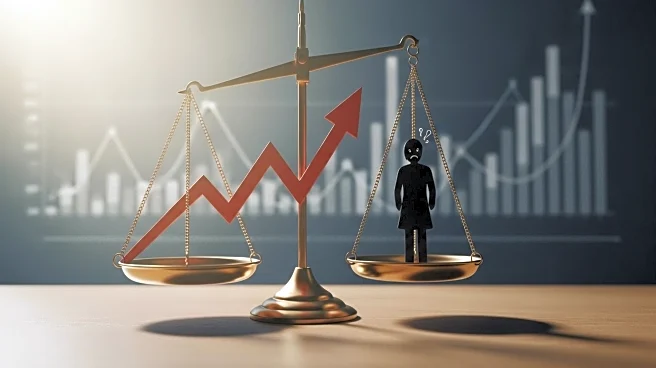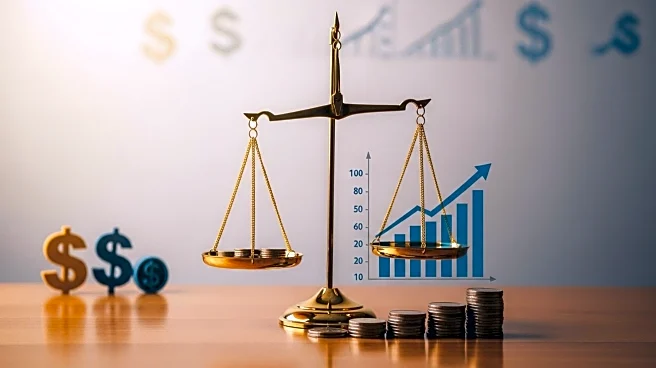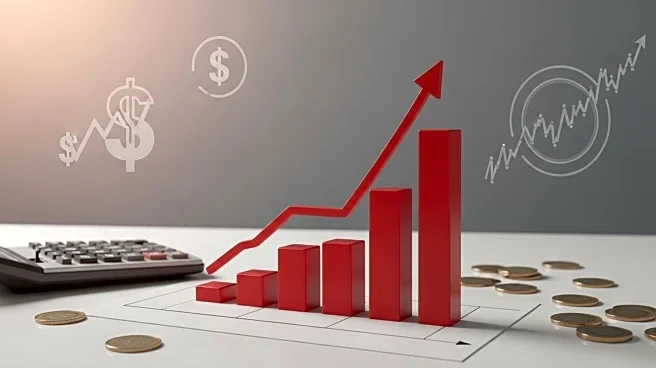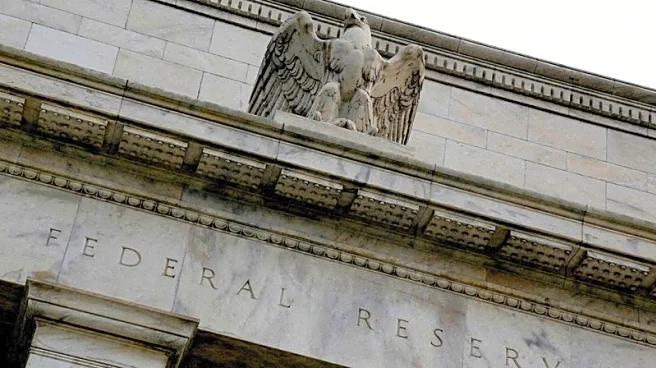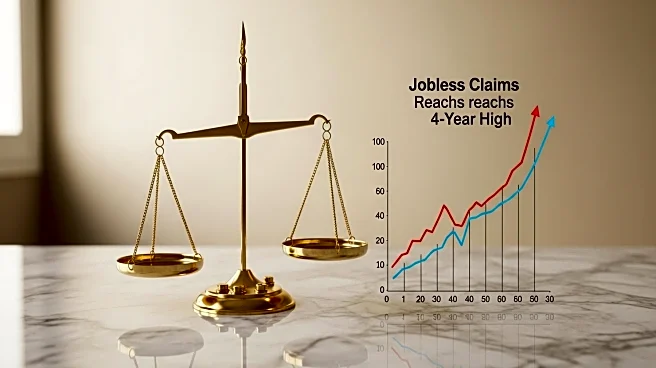What's Happening?
Recent data indicates that consumer prices have risen by 2.9% in August compared to the previous year, largely due to tariffs imposed by President Trump. These tariffs, first announced in April, have significantly affected the prices of imported goods such as coffee, bananas, and toys. The Consumer Price Index (CPI) shows that core inflation, excluding food and energy, rose by 0.4% in August, marking the largest monthly increase since January. The Federal Reserve Bank of San Francisco notes that tariffs have a significant impact on prices, with Americans now facing an average tariff rate of 17.4%, the highest since 1935.
Why It's Important?
The increase in consumer prices due to tariffs is drifting inflation further from the Federal Reserve's target of 2%, putting pressure on household spending. The tariffs are estimated to cost U.S. households an extra $2,300 in 2025, affecting sectors from food and retail to manufacturing and healthcare. This situation could lead to increased financial strain on consumers, particularly those with lower incomes, as they face higher costs for everyday goods and services.
What's Next?
As tariffs continue to impact prices, businesses may further pass these costs onto consumers, potentially leading to more price hikes in the coming months. The Federal Reserve's Beige Book survey indicates that tariff-related price increases are visible across the U.S., suggesting ongoing economic adjustments. Stakeholders, including businesses and consumers, may need to adapt to these changes, possibly influencing spending habits and economic strategies.
Beyond the Headlines
The long-term implications of these tariffs could include shifts in trade relationships and supply chain dynamics, as businesses seek to mitigate costs. Additionally, the economic strain may prompt discussions on policy adjustments or negotiations to alleviate tariff impacts.


